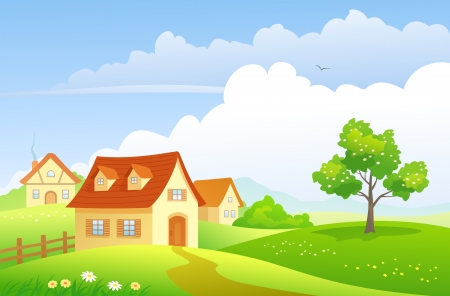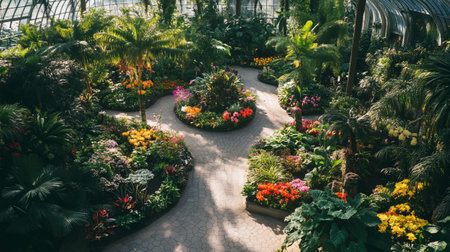Introduction: Embracing the Five Elements in British Garden Design
The timeless beauty of British gardens is renowned for its artful balance, thoughtful structure, and deep connection to the natural landscape. As we seek ever-greater harmony in our outdoor spaces, the ancient wisdom of the Five Elements—Wood, Fire, Earth, Metal, and Water—offers a compelling framework for both design inspiration and environmental wellbeing. Traditionally rooted in Eastern philosophies, these elemental principles can be thoughtfully woven into the tapestry of British garden aesthetics, enhancing year-round comfort and visual delight. By exploring how each element manifests within the context of local flora, climate, and cultural sensibility, we invite an elevated sense of place—where heritage meets holistic design. This journey not only celebrates classic English gardening traditions but also opens new pathways for cultivating spaces that nurture both body and spirit throughout every season.
2. Earth: Solid Foundations and Structure
Within the Five Elements philosophy, Earth represents stability, nourishment, and a grounded sense of place—qualities that resonate deeply with British garden traditions. The essence of Earth in external Feng Shui is about creating spaces that feel anchored, secure, and inviting throughout the year.
Brick, Stone, and English Hedgerows: The Backbone of British Gardens
British gardens are famed for their enduring materials and timeless boundaries. Brick walls, dry-stone borders, and lush hedgerows not only define property lines but also foster a sense of enclosure and protection. Integrating these elements aligns with Feng Shui’s call for strong foundations while remaining true to local heritage.
Instilling Stability Through Material Choices
| Element | Traditional British Use | Feng Shui Benefit |
|---|---|---|
| Brick | Cottage walls, paths, raised beds | Creates warmth, permanence, and shelter |
| Stone | Dry stone walls, patios, steps | Adds natural strength and energy absorption |
| Hedgerows | Living boundaries, wildlife corridors | Softens edges, enhances belonging and flow |
Practical Tips for a Grounded Garden Design
- Layer your boundaries: Combine brick or stone with mixed native hedging to blend solid structure with living texture.
- Create zones: Use low stone walls or clipped box to divide spaces for dining, relaxing, or contemplation—each zone supporting connection and comfort.
- Anchor focal points: A classic sundial or sturdy bench set on stone flags draws energy inward while reinforcing stability at the heart of the garden.
The thoughtful integration of brickwork, local stone, and well-tended hedgerows not only echoes centuries of British horticultural wisdom but also brings harmonious Earth energy into your outdoor sanctuary all year round.

3. Water: Flow and Reflection in the English Landscape
In the traditional philosophy of the Five Elements, water symbolises flow, adaptability, and emotional depth. When thoughtfully integrated into British gardens, water features not only enhance aesthetic pleasure but also foster a sense of tranquillity and balance that resonates throughout the seasons. The gentle presence of ponds, rills, and rain chains can be found in historic English gardens and contemporary landscapes alike—each carrying its own cultural resonance and role within the garden’s harmony.
Ponds: Stillness at the Heart of the Garden
Ponds have long been cherished in British gardens, providing a reflective surface that mirrors both sky and foliage. In Feng Shui, such still waters are believed to calm the spirit and invite clarity of mind. Whether formal or naturalistic, an English pond offers a haven for wildlife while encouraging moments of quiet contemplation. Positioning a pond where it gently captures morning light or frames a favourite view will amplify its restorative qualities.
Rills: Guiding Energy with Gentle Movement
Inspired by both ancient Persian influences and British ingenuity, rills—narrow channels of running water—bring a dynamic element to the landscape. Their subtle sounds mask unwanted noise, guiding positive energy (or qi) through the garden. British designers often integrate rills along stone pathways or through herbaceous borders, creating visual continuity while echoing the rhythm of seasonal change.
Rain Chains: Celebrating Rainy Days
Embracing Britain’s famously wet climate, rain chains offer a poetic alternative to downpipes. These vertical features transform rainfall into a sensory experience, their trickling patterns producing soothing sounds that evoke calm even on grey days. Positioned near entrances or patios, rain chains serve as living reminders to appreciate nature’s cycles—balancing emotional energies regardless of the weather.
Year-Round Wellbeing Through Water
By weaving together traditional water features like ponds, rills, and rain chains, British gardeners create outdoor sanctuaries that nurture body and mind all year round. Each element is chosen not just for its beauty but for its power to harmonise seasonal energies, ensuring that gardens remain sources of serenity whatever the month.
4. Wood: Growth, Renewal, and Timeless Planting
Within the philosophy of the Five Elements, Wood signifies growth, renewal, and resilience—a perfect match for the British garden’s ever-changing yet enduring character. By focusing on native trees, structured herbaceous borders, and thoughtfully integrated wooden features, you can infuse your outdoor space with vitality while nurturing personal development and well-being throughout the year.
Native Trees: Rooting Harmony in Place
The use of native British trees such as oak, birch, rowan, or hawthorn brings not only ecological benefits but also a strong sense of belonging and continuity. These species are well-adapted to local conditions and support native wildlife. Their cyclical changes—budding in spring, lushness in summer, golden leaves in autumn—mirror our own cycles of renewal. Planting a tree can also be a deeply personal act: it celebrates milestones and symbolises hopes for the future.
Popular Native Trees and Their Symbolism
| Tree Species | Cultural Significance | Feng Shui Benefits |
|---|---|---|
| Oak | Strength & Endurance | Stability & Long-term Growth |
| Rowan | Protection & Inspiration | Positive Energy & Renewal |
| Birch | New Beginnings & Purity | Cleansing & Fresh Starts |
| Hawthorn | Hope & Fertility | Encourages Flourishing Ideas |
Herbaceous Borders: Layered Life and Colour
No British garden feels complete without generous herbaceous borders. Layering native perennials—such as foxglove, campanula, and lady’s mantle—creates a vibrant tapestry that evolves with each season. This dynamic planting style encourages biodiversity while reflecting Wood’s energy of expansion and vitality. Carefully curated borders invite exploration and contemplation, providing a living canvas for personal reflection and relaxation.
Suggested Plants for Vibrant Borders
| Plant Name | Main Season of Interest | Sensory Benefit |
|---|---|---|
| Foxglove (Digitalis) | Late Spring–Summer | Tall structure, attracts bees, soothing colours |
| Cowslip (Primula veris) | Spring–Early Summer | Cottage garden charm, delicate fragrance |
| Lambs Ear (Stachys byzantina) | Spring–Autumn | Soft texture, silvery foliage for calmness |
| Lupin (Lupinus polyphyllus) | Summer | Dramatic spikes, bold hues energise space |
Wooden Features: Inviting Warmth and Structure
The inclusion of wooden elements—benches crafted from English oak, willow hurdles for privacy, or pergolas draped with climbing roses—adds tactile warmth and grounding to your garden. These features not only define spaces but also encourage moments of pause for introspection or connection with others. Sustainable materials echo the ethos of balance and respect for nature fundamental to both Feng Shui and British gardening tradition.
Cultivating Well-being Through Intentional Design
A harmonious British garden guided by the Wood element thrives on thoughtful layering—from mighty native trees anchoring the landscape to lively borders brimming with perennial treasures. When enhanced by handcrafted wooden accents, your outdoor sanctuary becomes a place where vibrancy flourishes and every season offers new opportunities for growth—both in your garden and within yourself.
5. Fire: Warmth, Light, and Seasonal Celebration
In the rhythm of British gardens, the element of fire brings a sense of vitality that enlivens outdoor spaces year-round. As an essential component of external feng shui, fire symbolises warmth, illumination, and communal joy. To integrate this element harmoniously within the local climate and culture, consider features that invite both energy and togetherness.
Fire Pits: Gathering around the Hearth
A fire pit serves as the modern heart of a British garden, providing not only practical warmth during crisp evenings but also a focal point for social gatherings. Choose a design that complements your garden’s character—whether rustic stone or contemporary metal—and position it where friends and family can gather comfortably. The crackle of flames encourages connection and storytelling, echoing traditional British bonfire nights and fostering lasting memories through all seasons.
Lanterns: Soft Illumination for Every Season
Lanterns, whether hung from ancient oak boughs or placed along winding paths, add a gentle glow that transforms gardens at dusk. Opt for weatherproof designs in copper or glass to suit the often unpredictable British weather. Candles or LED lights within lanterns create an inviting ambiance, celebrating light even on grey days and extending the enjoyment of outdoor spaces well into autumn and winter.
Bold Florals: Bursts of Colour and Energy
The fiery hues of dahlias, crocosmia, or red hot pokers inject dynamic energy into the landscape. Plant these bold blooms in clusters for maximum impact, echoing the warmth and exuberance of the fire element. In spring and summer, these flowers serve as visual beacons; in autumn, their rich tones complement the fading light, ensuring your garden remains vibrant throughout the year.
By weaving fire elements into your British garden—through welcoming hearths, radiant lanterns, and spirited floral displays—you create a space where warmth and celebration can flourish regardless of season. This synergy not only honours traditional values but also embodies harmonious feng shui principles tailored to the unique rhythms of British life.
6. Metal: Elegance and Clarity through Detail
In the context of British gardens, the Metal element evokes a sense of refinement, order, and crispness—qualities that elevate the overall harmony of your outdoor space. To introduce Metal’s energy into your garden with an English sensibility, consider the timeless appeal of wrought ironwork. Whether it’s a classic Victorian gate, intricate railings, or decorative arches framing pathways, these features bring both structure and elegance, guiding the eye with their clean lines and ornate patterns.
Garden sculpture offers another avenue for infusing Metal’s clarity. Opt for pieces crafted from bronze, copper, or steel; these materials not only reference Britain’s rich heritage in metalwork but also weather beautifully over time, developing unique patinas that add character to your landscape. A well-placed sundial or contemporary abstract piece can serve as a striking focal point while maintaining balance within traditional planting schemes.
For more subtle metallic flourishes, consider zinc planters, brushed aluminium edging, or copper lanterns nestled among perennial borders. These accents punctuate greenery with glimmers of light and highlight key areas without overwhelming the natural beauty of the space. The careful placement of such details reflects thoughtful organisation—a hallmark of both Feng Shui and classic British garden design.
Ultimately, integrating the Metal element is about achieving visual flow and cohesion. Use metallic features to delineate spaces or create gentle transitions between different garden zones. Allow them to frame vistas or anchor seating areas, ensuring every detail contributes to an atmosphere of composed elegance and year-round harmony in your British garden.
7. Seasonal Harmony: Balancing the Elements all Year Round
Bringing the five elements into your British garden isn’t a one-off endeavour—it’s a living, breathing relationship that changes with the seasons. To achieve perennial feng shui, it’s essential to align elemental energies with the natural rhythms of Britain’s temperate climate, ensuring your outdoor space remains both vibrant and harmonious throughout the year.
Spring: Inviting Renewal and Growth
As spring breathes new life into your garden, focus on Wood energy—symbolising growth and vitality. Incorporate vertical planting, flowering bulbs, or freshly pruned hedgerows to encourage upward movement and fresh beginnings. Water features can be refreshed or cleaned now, harnessing spring rain to enliven ponds and birdbaths for added prosperity.
Summer: Embracing Fire and Abundance
The British summer, with its longer days and lush foliage, is the time to celebrate Fire energy. Introduce splashes of red or gold in your borders—think poppies, roses, or ornamental grasses. Arrange seating areas in sunny spots to encourage gatherings and lively conversation. Consider adding lanterns or soft lighting for those balmy evenings when the garden becomes an extension of your home.
Autumn: Earth’s Grounding Touch
Autumn calls for a shift towards Earth energy, grounding your garden as the year wanes. Mulch beds with leaf litter or compost to nourish soil, echoing the season’s gentle return to stability. Incorporate clay pots, stone ornaments, or low-growing evergreens to anchor pathways and create comforting transitions between spaces.
Winter: Metal and Water Reflection
In winter’s quieter months, lean into Metal and Water elements for clarity and tranquillity. Prune trees to reveal elegant branch structures against frosty skies; introduce silver-leaved plants like lavender or santolina for subtle gleam. Reflective surfaces—mirrored ornaments or still water bowls—capture scarce sunlight, enhancing serenity even on overcast days.
Practical Tips for Year-Round Elemental Balance
- Rotate container displays with seasonal colour schemes aligned to elemental energies.
- Use British-made materials—Cotswold stone, oak benches, ironwork—to strengthen local connection while honouring element symbolism.
- Edit planting plans annually to maintain vibrancy and adapt to changing microclimates.
Conclusion: A Living Tapestry of Harmony
By weaving elemental principles into the natural cadence of British seasons, you transform your garden into a dynamic sanctuary—one that not only reflects local heritage but also nurtures well-being all year round. With mindful adjustments and a keen eye for seasonal shifts, external feng shui becomes more than theory: it’s a joyful, evolving part of everyday life outdoors.

